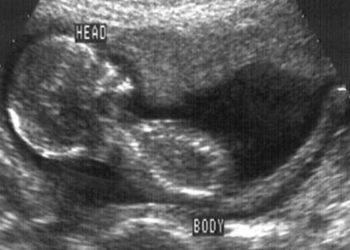High fertilization rates following intracytoplasmic sperm injection (ICSI) [Classics Series]
1. Among infertile couples with poor prognosis and/or severe male factor infertility, intracytoplasmic sperm injection (ICSI) was associated with higher fertilization, implantation, and pregnancy rates.
Original Date of Publication: April 1993
Study Rundown: Male factor infertility is a vexing problem in the field of reproductive endocrinology and infertility. Couples with severe male factor infertility often fail standard in vitro fertilization (IVF) treatment or are considered ineligible. Part of the difficulty diagnosing and treating male factor infertility relates to a history of underdiagnosis. In fact, semen analysis was not a routine part of the standard infertility evaluation until the 1980’s. One decade later, treatment options for male factor remained limited but were quickly expanding. These included subzonal insemination (SUZI; injection of spermatozoa below the zona pellucida, into the perivitelline space) and partial zona pellucida dissection. However, these treatments were associated with fertilization rates of just 20-25%. Researchers proposed that injection of spermatozoa directly into oocyte cytoplasm, a technique that would soon be referred to as ICSI, might improve pregnancy rates. Two small studies reported use of this procedure and their results suggested improvement in clinical outcomes with ICSI but did not directly compare outcomes with SUZI.
In this landmark study, authors investigated ICSI outcomes in a large cohort and directly compared ICSI to SUZI outcomes in 11 sister oocytes. Results demonstrated markedly improved outcomes associated with ICSI (39% clinical pregnancy rate) and, compared with SUZI, ICSI conferred a greater than 18-fold increase in fertilization rate. This landmark study was the first to directly compare ICSI to SUZI and the first to demonstrate improved pregnancy rates in a large cohort. Strengths included head-to-head comparison, single-center study using one clinic and lab to minimize variability in procedures and techniques. Limitations included lack of live birth or adverse effects assessment (e.g. incidence of monozygotic twinning, congenital anomalies, etc). Future investigations would go on to characterize ICSI as the best treatment option for couples with severe male factor infertility. Adverse effects assessments would demonstrate that ICSI is associated with a mildly increased risk of genitourinary abnormalities (e.g. male factor infertility, hypospadias) but not with an increase in major congenital anomalies compared to baseline in the infertile population.
Click to read the study in Obstetrics & Gynecology
In-Depth [prospective cohort study]: A total of 150 infertile couples who failed standard IVF procedures (<5% fertilization rate) or were deemed ineligible for IVF due to severe male factor infertility (< 500 000 progressively motile spermatozoa or failed SUZI procedure) underwent ICSI. Additionally, controlled comparison was performed between the SUZI and ICSI procedure in 11 sibling oocytes. Primary outcome was the clinical pregnancy rate per embryo transfer. Secondary outcomes included fertilization rate, in vitro maturation and frequency of oocytes damaged by the ICSI procedure.
Among a cohort of 150 infertile couples, ICSI was associated with a 64% fertilization rate, of which 71% developed into embryos and were transferred or cryopreserved. The clinical pregnancy rate per embryo transfer was 39%, represented by 53 clinical pregnancies. Compared to a 4% fertilization rate with SUZI, ICSI was associated with a 73% fertilization rate on sibling oocytes (p < 0.01). Only 8% of oocytes were damaged in the process of ICSI.
Image: PD
©2015 2 Minute Medicine, Inc. All rights reserved. No works may be reproduced without expressed written consent from 2 Minute Medicine, Inc. Inquire about licensing here. No article should be construed as medical advice and is not intended as such by the authors or by 2 Minute Medicine, Inc.







